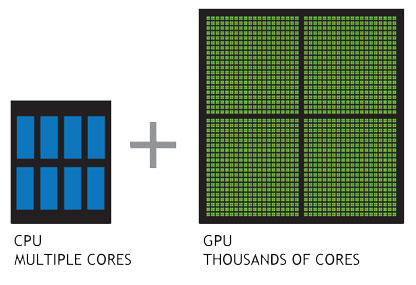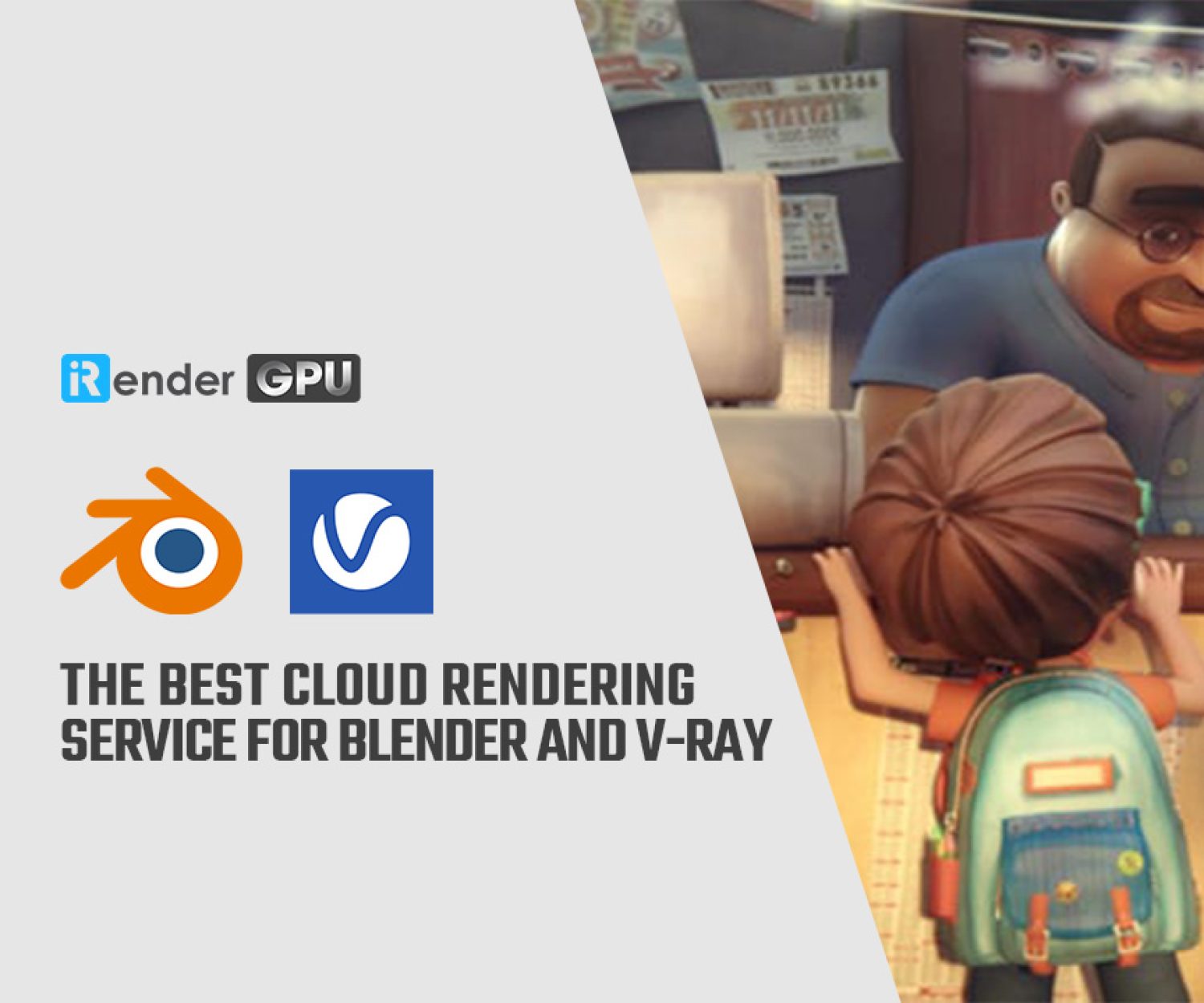CPU vs. GPU Rendering: Which Is Best for Your Projects?
What is CPU & CPU rendering? What is the best choice for your project? In this article, iRender with you going to find the answer to this question. Let’s get started!
What are the differences between GPU and CPU?
A simple way to understand the difference between a CPU and GPU is to compare how they process tasks. A CPU consists of a few cores optimized for sequential serial processing, while a GPU has a massively parallel architecture consisting of thousands of smaller, more efficient cores designed for handling multiple tasks simultaneously.
GPUs are markedly faster than CPUs, but only for certain tasks. GPUs may have some limitations in rendering complex scenes due to interactivity issues when using the same graphics card for both rendering and display, or due to insufficient memory. And while CPUs are best suited to single-threaded tasks, the tasks of modern games become too heavy for CPU graphics solution.
Some advantages and disadvantages of CPU rendering include:
- Developing for the CPU is easier most of the time, as it makes adding more features a simpler process. Additionally, developers are generally more familiar with programing on the CPU.
- CPUs can implement algorithms that are not suited to parallelism.
- The CPU has direct access to the hard drives and main system memory, enabling it to hold a greater amount of data as system memory, which is expandable and more cost effective.
- CPU programs tend to be more stable and better tuned due to the maturity of available tools.
- CPUs do not stack well — their designs change often and a new motherboard is required for upgrades, which can be very costly.
- CPUs are power inefficient, expending high amounts of power to deliver low latency results.
Some advantages and disadvantages of GPU rendering include:
- Scalability in multi-GPU rendering setups.
- GPU rendering solutions consume less power that CPUs.
- GPUs do not have direct access to the main system memory or hard drives and must communicate through the CPU.
- GPUs depend on driver updates to ensure compatibility with new hardware.
- Speed boosts – many modern render systems are suited for GPU software and hardware, which are designed for massively parallel tasks and can provide overall better performance.
- Lower hardware costs due to the increase in computation power.
The use of CPU and GPU Rendering depends entirely on the consumer’s rendering needs. The architectural industry may benefit more from traditional CPU rendering, which takes longer, but generally generates higher quality images, and a VFX house may benefit more from GPU rendering, which is specifically designed to manage complicated, graphics-intensive processing. The best GPU for rendering depends on the intended use and budget.
GPU Renderer
- Redshift is the world’s first fully GPU-accelerated, biased renderer and it is also the most popular GPU renderer. Redshift uses approximation and interpolation techniques to achieve noise-free results with relatively few samples, making it much faster than unbiased rendering. From rendering effects, Redshift can reach the highest level of GPU rendering, and render high-quality movie-level images.
- V-Ray RT (Real-Time) is Chaos Group’s interactive rendering engine that can utilize both CPU and GPU hardware acceleration to see updates to rendered images in real time as objects, lights, and materials are edited within the scene.
- Blender Cycles is Blender’s ray-trace based and unbiased rendering engine that offers stunning ultra-realistic rendering. Cycles can be used as part of Blender and as stand-alone, making it a perfect solution for massive rendering on clusters or at cloud providers.
- Indigo Renderer is an unbiased, physically based and photorealistic renderer which simulates the physics of light to achieve near-perfect image realism. With an advanced physical camera model, a super-realistic materials system and the ability to simulate complex lighting situations through Metropolis Light Transport, Indigo Renderer is capable of producing the highest levels of realism demanded by architectural and product visualization.
- NVIDIA Iray is a highly interactive and intuitive, physically based rendering solution. NVIDIA Iray rendering simulates real-world lighting and practical material definitions so that anyone can interactively design and create the most complex of scenes. Iray provides multiple rendering modes addressing a spectrum of use cases requiring real-time and interactive feedback to physically based, photorealistic visualizations.
- Octane Render is the world’s first and fastest GPU-accelerated, unbiased, physically correct renderer. It means that Octane uses the graphics card in your computer to render photo-realistic images super fast. With Octane’s parallel compute capabilities, you can create stunning works in a fraction of the time.
- LuxRender is a physically based and unbiased rendering engine. Based on state of the art algorithms, LuxRender simulates the flow of light according to physical equations, thus producing realistic images of photographic quality.
In this video, we answer the question What is the best option for 3D rendering – multi-core CPU or GPU?
iRender launches GPU server 8x RTX 3090- rendering in a flash!
We at iRender Farm made it our profession to always provide our users with the best technology and the RTX 3080 & RTX 3090.
Here the tech specs of server 9 (8 x GPU RTX 3090) at a glance:
- CPU: AMD Ryzen Threadripper Pro 3955WX @ 3.90GHz
- Each machine with RAM:256 GB
- GPU: 8X RTX 3090, 24GB vRAM
- GPU Architecture: Nvidia Ampere, GA102
- Storage (SSD):2TB
Do you want to experience the speed of 8x RTX 3090 GPU servers right now? Go ahead, create an account with us and log in to render on the farm.
Happy Rendering!
Related Posts
The latest creative news from Blender Cloud Rendering, Redshift Cloud Rendering, Houdini Cloud Rendering , Octane Cloud Rendering, 3D VFX Plugins & Cloud Rendering.








